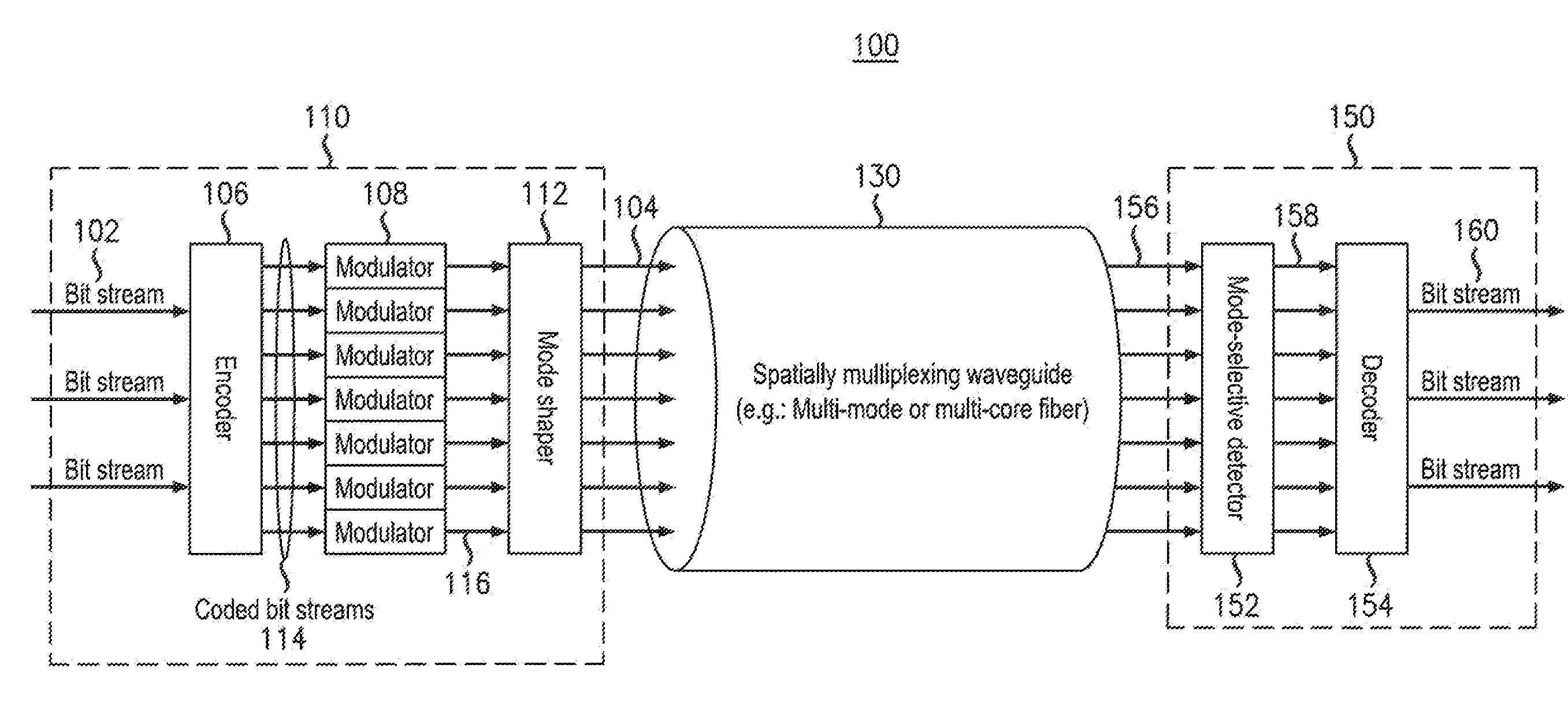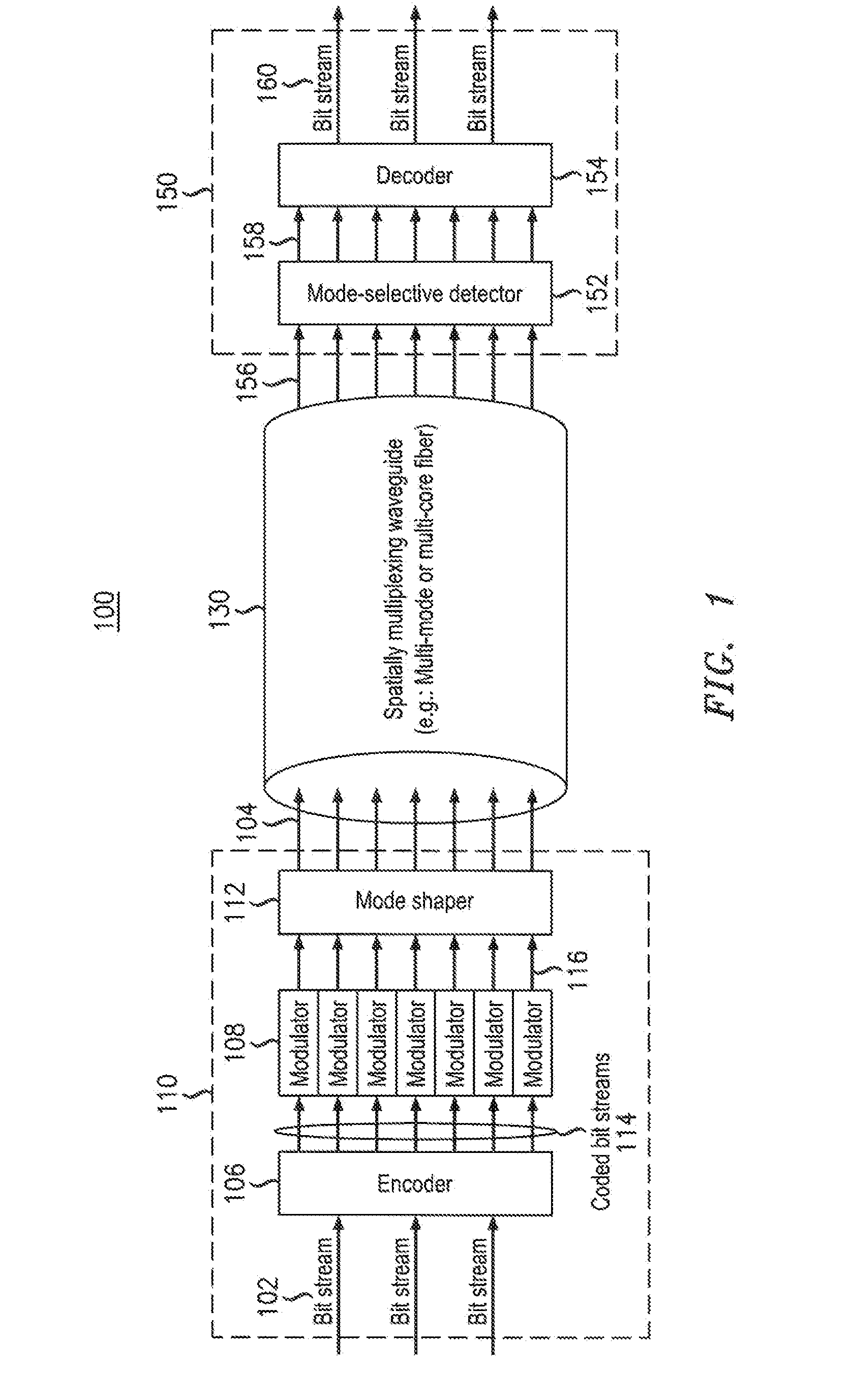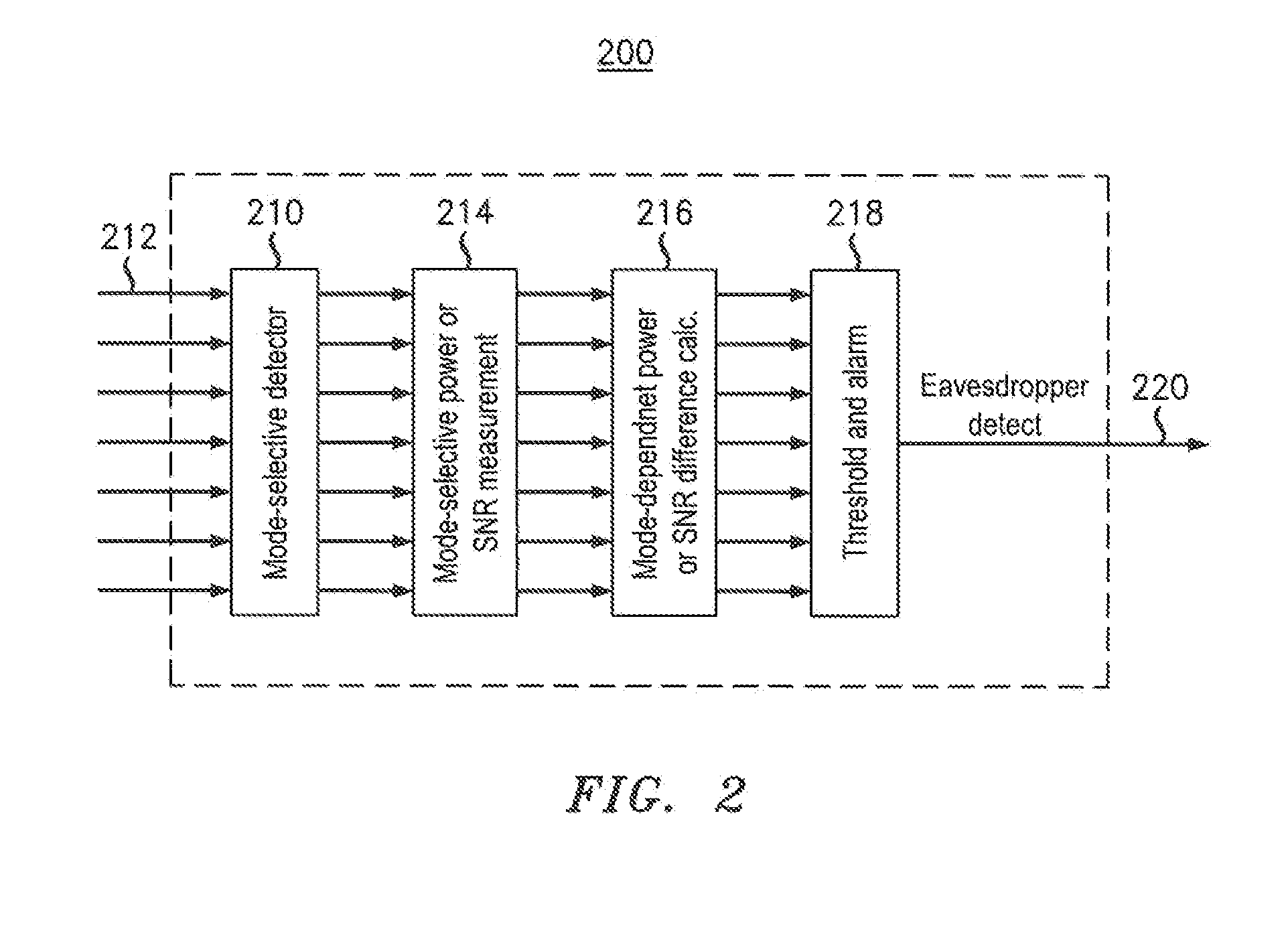Secure Data Transmission Using Spatial Multiplexing
a data transmission and spatial multiplexing technology, applied in the field of optical transmission equipment, can solve the problems of small extra loss, single-mode and conventional multi-mode fibers are inherently vulnerable to bend-induced tapping, and both such systems are vulnerable to tapping
- Summary
- Abstract
- Description
- Claims
- Application Information
AI Technical Summary
Benefits of technology
Problems solved by technology
Method used
Image
Examples
Embodiment Construction
[0033]Various example embodiments will now be described more fully with reference to the accompanying figures, it being noted that specific structural and functional details disclosed herein are merely representative for purposes of describing example embodiments. Example embodiments may be embodied in many alternate forms and should not be construed as limited to only the embodiments set forth herein.
[0034]It will be understood that, although the terms first, second, etc. may be used herein to describe various elements, these elements should not be limited by these terms since such terms are only used to distinguish one element from another. For example, a first element could be termed a second element, and, similarly, a second element could be termed a first element, without departing from the scope of example embodiments. Moreover, a first element and second element may be implemented by a single element able to provide the necessary functionality of separate first and second ele...
PUM
 Login to View More
Login to View More Abstract
Description
Claims
Application Information
 Login to View More
Login to View More - R&D
- Intellectual Property
- Life Sciences
- Materials
- Tech Scout
- Unparalleled Data Quality
- Higher Quality Content
- 60% Fewer Hallucinations
Browse by: Latest US Patents, China's latest patents, Technical Efficacy Thesaurus, Application Domain, Technology Topic, Popular Technical Reports.
© 2025 PatSnap. All rights reserved.Legal|Privacy policy|Modern Slavery Act Transparency Statement|Sitemap|About US| Contact US: help@patsnap.com



